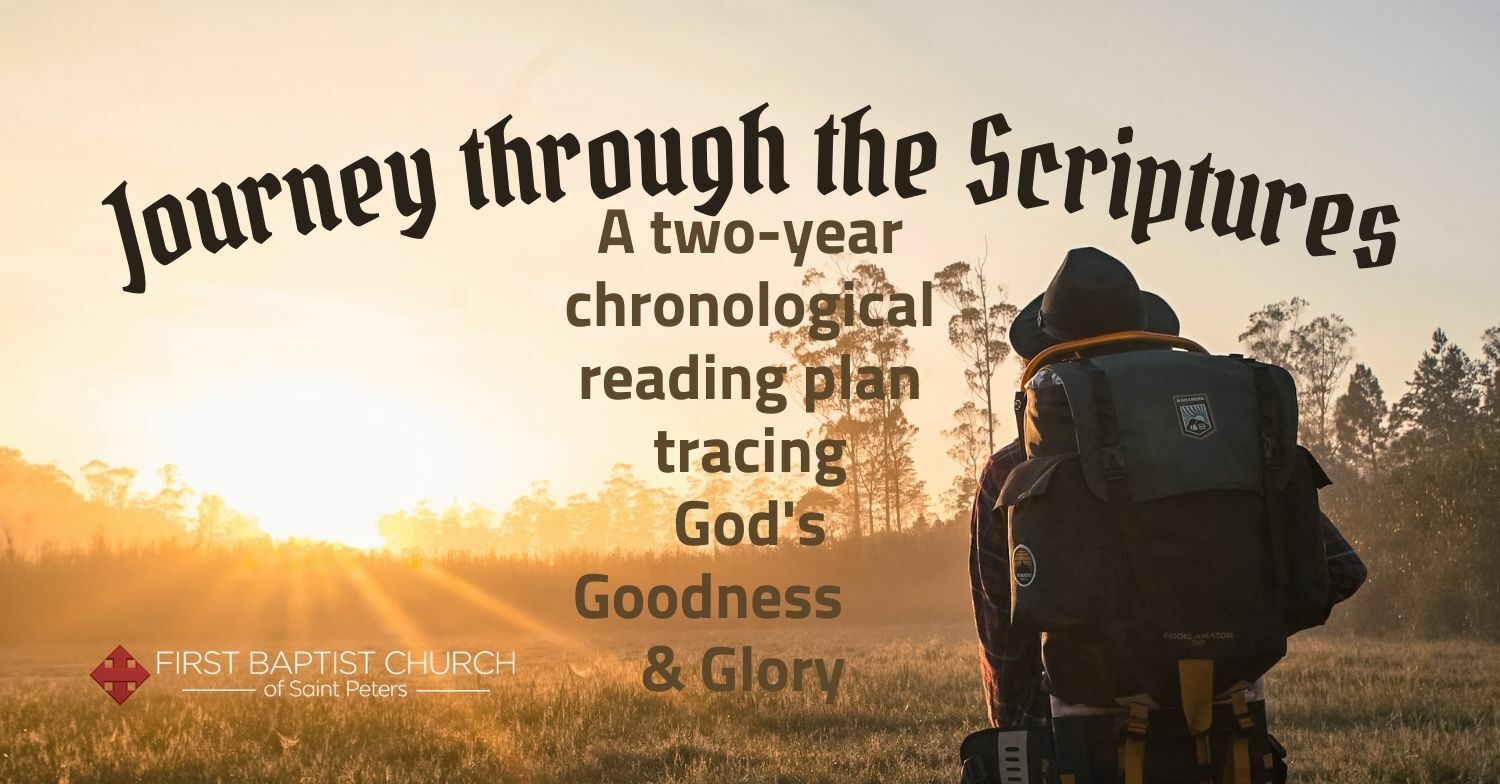Year 2, Week 33, Day 5 Bible Reading Observations

Year 2, Week 33, Day 5
I have a brief observation for today’s reading of Matthew 16; Mark 8.
Today’s reading involves readings from two Gospel accounts that have some parallel to each other. Mark 8 opens with an event that concluded yesterday’s reading from Matthew 15. Jesus performs another miracle concerning a mass feeding: “And his disciples answered him, “How can one feed these people with bread here in this desolate place?” And he asked them, “How many loaves do you have?” They said, “Seven.” And he directed the crowd to sit down on the ground. And he took the seven loaves…And they had a few small fish” (Mark 8:4-7). This event is distinct from an earlier miracle involving the feeding of five thousand with only five loaves and two fish (see Matthew 14:13-21; Luke 9:10-17; and Mark 6:30-44). The miracle in today’s reading involved seven loaves and a few fish, which feed four thousand. Today’s reading from Matthew 16 picks up with the event that is also found in Mark 8, as the Pharisees demand a sign from Jesus: “The Pharisees came and began to argue with him, seeking from him a sign from heaven to test him. And he sighed deeply in his spirit and said, “Why does this generation seek a sign? Truly, I say to you, no sign will be given to this generation” (Mark 8:11-12; see also Matthew 16:1-4). Jesus proceeds to warn His disciples about the Jewish religious establishment, but they do not grasp what He is talking about: “Now they had forgotten to bring bread, and they had only one loaf with them in the boat. And he cautioned them, saying, “Watch out; beware of the leaven of the Pharisees and the leaven of Herod.” And they began discussing with one another the fact that they had no bread” (Mark 8:14-16). Both accounts in today’s readings include Peter’s confession of who Christ is, as well as Christ’s elaboration about His soon arrest, crucifixion, and death; however, Matthew’ account records what Jesus said in concerning the church: “And Jesus answered him, “Blessed are you, Simon Bar-Jonah! For flesh and blood has not revealed this to you, but my Father who is in heaven. And I tell you, you are Peter, and on this rock I will build my church, and the gates of hell shall not prevail against it” (Matthew 16:17-18).
One of the things that struck me from today’s reading was a healing that Mark’s Gospel account adds just prior to Peter’s confession and Jesus’ explanation about His imminent arrest, crucifixion, and death: “And they came to Bethsaida. And some people brought to him a blind man…And he took the blind man by the hand…and when he had spit on his eyes and laid his hands on him, he asked him, “Do you see anything?” And he looked up and said, “I see people, but they look like trees, walking.” Then Jesus laid his hands on his eyes again; and he opened his eyes, his sight was restored, and he saw everything clearly” (Mark 8:22-25). This particular miracle is unique to Mark, and the two-stage healing process that Jesus used with this person, is not a method that Jesus is recorded as using elsewhere. Typically, when Jesus healed, it was immediate and complete. In this miracle, Jesus healed the man of sight, but it was somewhat impaired sight. People looked like trees walking around. While Jesus’ miracles were acts of mercy that validated His teachings, there seems to be another point in the process of this miracle. The point behind this two-stage healing is probably connected to who Peter truly understands Jesus to be, and yet, Peter’s incomplete understanding of all that Jesus is.
Peter rightly sees Jesus: “And he asked them, “But who do you say that I am?” Peter answered him, “You are the Christ” (Mark 8:29). Peter’s eyes have been opened: “Simon Peter replied, “You are the Christ, the Son of the living God.” And Jesus answered him, “Blessed are you, Simon Bar-Jonah! For flesh and blood has not revealed this to you, but my Father who is in heaven” (Matthew 16:16-17). But Peter’s understanding is not complete; there are things that he does not see or understand about Jesus that get exposed by what Jesus adds to Him being the Christ: “And he began to teach them that the Son of Man must suffer many things and be rejected by the elders and the chief priests and the scribes and be killed, and after three days rise again. And he said this plainly. And Peter took him aside and began to rebuke him” (Mark 8:31-32). Peter is not seeing what Jesus just explained; in fact, Peter believes that Jesus needs straightening out. Peter has a different understanding of what what Israel’s long-awaited Messiah would accomplish; and nowhere does Peter see how a conquering Christ would suffer and die. But Peter is not seeing straight and needs a stern rebuke of his own: “But turning and seeing his disciples, he rebuked Peter and said, “Get behind me, Satan! For you are not setting your mind on the things of God, but on the things of man” (Mark 8:33). Peter’s understanding of Jesus is partially correct, but also incomplete. More aid from Jesus is needed to more fully remove from Peter his blindness and misunderstanding. Mark will record a second and a third announcement of His arrest, crucifixion, and death (see Mark 9:30-32; 10:32-24). And yet, it won’t be till after Jesus’ resurrection that Peter will completely see and fully understand that the Messiah will reign as a conquering King by dying.
What struck you in today’s reading? What questions were prompted from today’s reading?
Pastor Joe